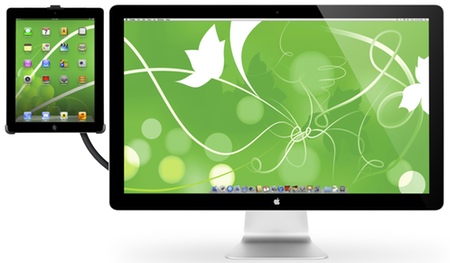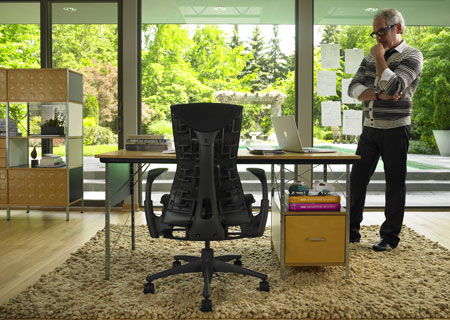Originally published on June 7, 2011 in our free SmallLaw newsletter. Instead of reading SmallLaw here after the fact, sign up now to receive future issues in realtime.

There are many things my mother didn't tell me that I had to learn the hard way — that is, in real life. In all fairness, however, my mother was not a lawyer so I cannot hold her accountable for not better equipping me for law practice when I was starting out. Having now practiced since Moses was a baby, I impart here a few handy hints (a la Heloise) from which lawyers starting their own practices who take heed will benefit greatly over the years. However mundane or retro these tips may sound right now, you'll thank me later.
1. Your First Purchase
You won't believe me, but your most important acquisition (definitely long before Black's) should be a business card scanner — preferably a small one that you can have at hand all the time, including when you go to conventions, professional programs, etc.
DYMO, which acquired CardScan, sells a variety of these with appropriate software that capture the information printed on the card, an image of the card, and your notes. The more annotations you add to each card the better (where you met the person, anything they said of note, brief physical description, existence or name of wife or kids if mentioned) because (1) you will not remember later, and (2) this information — and more importantly this store of information — will prove invaluable over the years.
If you're smart, you will not waste any time after the meeting dropping your new acquaintances an email (or even an old-fashioned snail mail note), and then from time to time stay in touch.
Of course now "there is an app for that" since iPhones (and others) can scan cards using their camera as the scanner. Just make sure the $5 app you buy works as reliably as the gold-standard CardScan. Either way, get back to your hotel room as quickly as possible to scan each business card before you forget anything.
2. Don't Run a Paper-Based Office, but if You Do …
A. Paper Punching
Buy one (or better yet two) GBC 150-sheet Electric Punches if you can find them. You can vary the punch location, so I bought two, set one up as a 3-hole and one as a 2-hole punch to avoid the annoyance of constantly changing punch locations. When I made the purchase, I suspected I might be losing my mind — nearly $600 with tax for a hole puncher! But I often thought over the years those had been, in the final analysis, two of my most astute purchases because they permitted my small law office to prepare (including punching) expeditiously huge paper submissions, and huge trial exhibit sets, for huge cases that we could not otherwise have handled.
Other electric two-hole punches will function only to place two holes at the top of the paper (as needed for court-filing), but will not place those two holes on the long edge of the paper (as is needed for European File systems and the like). But the GBC monsters can handle anything.
Nowadays, of course, your court filings can be uploaded to a service leaving all the pesky punching and tabbing to others, but at a significant financial cost. Similarly, you can engage services to assemble (copy, punch, tab, and insert in notebooks) your trial exhibits — but again at a rather fancy price.
Those who cannot afford such services will ultimately come out way ahead by investing in the GBC monster punches or their modern day equivalents.
For those with more modest budgets, high capacity manual punches are available, such as the Swingline Heavy-Duty High Capacity Hole Punch at $264.99 from Staples. Alternatively, for 3-hole punched trial exhibits and the like, purchase pre-punched papers and (assuming you have your exhibits already imaged) print your trial exhibits onto the pre-punched paper.
B. Exhibit and Declaration Tabs
Can't tell how much money you have invested in pre-printed exhibit pages that eat up storage space and yet never seem to include all the exhibit designations you actually need?
Buy what used to be called Redi-Tags and are now sometimes marketed as Medi-Tags. Each individual tab consists of (1) an area on which you can print (yes, with your printer or God forbid type) your exhibit or declaration designation, and (2) a gummed portion which can be invisibly affixed to the appropriate page in your papers, for either bottom or side tabs. These come in various sizes (suitable for just letters, numbers, or longer "Exhibit "#" or "Declaration of "#"). Because you can print them yourself, you can always have exactly the right tabs, and your entire collection takes up just a smidgen of space in a single drawer instead of an entire file cabinet.
3. Avoid "Groundhog Day" Scanning
For those who have switched over to scanning instead of squirrelling away paper, but have not yet fully succeeded, avoid the scanner's "Groundhog Day" trap of not knowing for sure (especially in the long run) what has already been scanned, and thus repetitively scanning documents "just to be sure."
The cure is simple. Buy an inked stamp (I use one which is just a red star). When a document has been scanned, stamp it with a red star on the front. If the document is "original," "certified" or otherwise unsuitable for stamping, then stamp a small post-it with your red star and staple the stamped post-it to the front of the document.
4. In Praise of Labels
While shopping at DYMO or the like, get yourself two printers (or a DYMO Turbo, which is essentially two side-by-side label printers in a single chassis) that you can set up so that your mailing labels print out on the left, while your postage stamps (from Endicia) print out on the right.
And now for the tip that will save you the most money and grief over the course of your electronics-buying career! While you are still dropping bucks at DYMO, buy yourself yet another label printer that creates vinyl labels with peel-off backs. Then, every time you purchase a computer or other electronic device, immediately (i.e., before you let yourself sit down and play with it) print and affix a label to every single cord and other accessory and miscellaneous piece — including most importantly the AC power adapter — that came with your new toy.
That label must show the name of the main product to which this piece is appurtenant, and its function. And do not forget to label the main gadget, including its serial number, and other essential information. This regime is the only cure known to man or woman for the calamity that will ensue when you move or otherwise need to store and later re-connect equipment.
5. Your Own Private Law Library
When conducting legal research on a particular point, I often stumble across really fabulous authority for other and different points which are likely to arise, either next Tuesday or a year from next Tuesday. For a while I deluded myself into believing that I would be able easily to find these authorities again. Not so — and especially not if the point appears nested in language that contains few distinctive words providing fodder for a future search. And even when I could find the desired authority again, it was only with the expenditure of significant additional time.
I constantly express thankfulness in my prayers for the day that it finally hit me that I should create a special directory that I could treat as my own personal law library (e.g., \LEX). Now I don't know about you Westlaw folks, but on Lexis.com I can download and save the single case authority containing my newly discovered nugget, and can do so without interfering with my ongoing research on the original point.
So now I save that little gem of authority while I have it in front of me. But think through and adopt a naming convention for your collection of downloaded cases, the idea being that you should make them easy to find by a simple file-name search when you need to locate "that great case that held X" or which "dealt with procedural scenario Y."
Now I am not, of course, talking about saving cases saying that it is possible to demur to a complaint, but rather cases (and statutes) which either (1) deal with points which have a high recurrence rate in your practice, or (2) which might prove difficult or even impossible to find again in the future. Even so, my own "private library" now contains over 3,500 cases and statutes.
Once again — you will thank me later.
Written by Yvonne M. Renfrew of Renfrew Law.
How to Receive SmallLaw
Small firm, big dreams. Published first via email newsletter and later here on our blog, SmallLaw provides you with a mix of practical advice that you can use today, and insight about what it will take for small law firms like yours to thrive in the future. The SmallLaw newsletter is free so don't miss the next issue. Please subscribe now.












